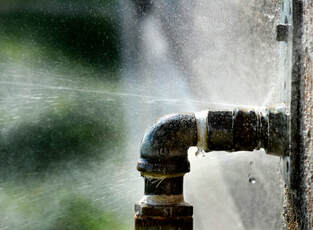Guide To Water Leak Discovery In The House
Guide To Water Leak Discovery In The House
Blog Article
Are you trying to find critical info on Detecting hidden plumbing leaks?

Early detection of leaking water lines can reduce a potential catastrophe. In addition to conserving you cash, it will certainly decrease the worry and irritation. The minute you discover a leak, calling your plumber for repair work is the very best solution. However, some small water leaks may not show up. If you can not detect it with your naked eyes, right here are some hacks that assist.
1. Analyze the Water Meter
Every residence has a water meter. Checking it is a guaranteed way that assists you find leakages. For starters, switch off all the water sources. Guarantee no person will certainly flush, use the tap, shower, run the cleaning maker or dish washer. From there, go to the meter as well as watch if it will change. Considering that nobody is using it, there ought to be no movements. That suggests a fast-moving leak if it relocates. If you spot no modifications, wait a hr or 2 as well as examine back once again. This suggests you might have a sluggish leakage that might even be below ground.
2. Inspect Water Consumption
If you detect abrupt changes, despite your intake being the same, it implies that you have leaks in your plumbing system. A sudden spike in your bill suggests a fast-moving leak.
On the other hand, a consistent increase every month, even with the exact same behaviors, shows you have a slow-moving leakage that's likewise gradually rising. Call a plumber to extensively check your home, especially if you really feel a cozy location on your flooring with piping underneath.
3. Do a Food Coloring Examination
30% comes from toilets when it comes to water consumption. Test to see if they are running effectively. Decline flecks of food color in the tank and also wait 10 mins. If the color in some way infiltrates your bowl throughout that time without flushing, there's a leakage between the storage tank and dish.
4. Asses Exterior Lines
Do not forget to inspect your outside water lines as well. Test spigots by attaching a garden pipe. Must water seep out of the connection, you have a loose rubber gasket. Change this as well as ensure all links are tight. If you have actually got a lawn sprinkler, it will assist get it professionally analyzed and also preserved annually. One small leak can throw away tons of water as well as spike your water expense.
5. Inspect and Analyze the Situation
Home owners ought to make it a practice to examine under the sink counters and also even inside cupboards for any kind of bad odor or mold and mildew development. These two red flags suggest a leak so prompt attention is required. Doing regular assessments, also bi-annually, can save you from a significant trouble.
If you know your house is already old, maintain a watchful eye on your heaters, tubes, pipes etc. Check for discolorations and weakening as a lot of home appliances and also pipes have a life expectancy. They will certainly additionally normally deteriorate because of wear and tear. Do not wait for it to intensify if you suspect dripping water lines in your plumbing system. Call an expert plumber right now so you do not end up with a dreadful mess in your home.
Early discovery of leaking water lines can alleviate a prospective catastrophe. Some small water leaks may not be visible. Inspecting it is a guaranteed means that assists you uncover leakages. One small leak can squander loads of water and increase your water expense.
If you think leaking water lines in your plumbing system, do not wait for it to escalate.
WARNING SIGNS OF WATER LEAKAGE BEHIND THE WALL
PERSISTENT MUSTY ODORS
As water slowly drips from a leaky pipe inside the wall, flooring and sheetrock stay damp and develop an odor similar to wet cardboard. It generates a musty smell that can help you find hidden leaks.
MOLD IN UNUSUAL AREAS
Mold usually grows in wet areas like kitchens, baths and laundry rooms. If you spot the stuff on walls or baseboards in other rooms of the house, it’s a good indicator of undetected water leaks.
STAINS THAT GROW
When mold thrives around a leaky pipe, it sometimes takes hold on the inside surface of the affected wall. A growing stain on otherwise clean sheetrock is often your sign of a hidden plumbing problem.
PEELING OR BUBBLING WALLPAPER / PAINT
This clue is easy to miss in rooms that don’t get much use. When you see wallpaper separating along seams or paint bubbling or flaking off the wall, blame sheetrock that stays wet because of an undetected leak.
BUCKLED CEILINGS AND STAINED FLOORS
If ceilings or floors in bathrooms, kitchens or laundry areas develop structural problems, don’t rule out constant damp inside the walls. Wet sheetrock can affect adjacent framing, flooring and ceilings.
https://www.servicemasterbyzaba.com/blog/how-to-detect-water-leakage-in-walls/

I recently found that piece of writing about Detecting hidden plumbing leaks when doing research the internet. Appreciated our blog posting? Please share it. Help others discover it. I appreciate reading our article about Detecting hidden plumbing leaks.
Report this page